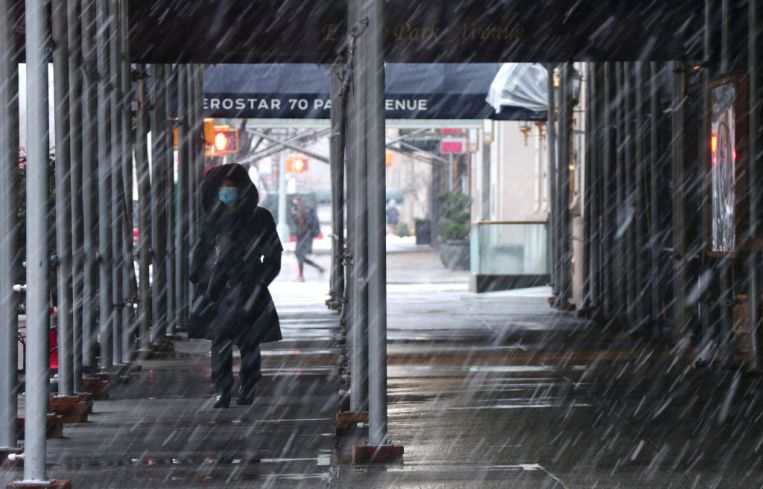Manhattan Borough President Wants Sidewalk Sheds to Come Down Much Quicker
By Rebecca Baird-Remba March 7, 2023 5:20 pm
reprints
Manhattan Borough President Mark Levine wants New Yorkers to spend less time in the darkness of protective sidewalk sheds.
The local politician put out a report Monday calling for a slate of changes to regulations related to Local Law 11, which requires most buildings in New York City to repair their facades — and erect a sidewalk shed in the process — every five years. The proposals include increasing the amount of years between facade updates, helping owners with permits and financing, and allowing landlords to use different types of protective coverings.
“Many of these are necessary to protect New Yorkers from falling debris and equipment and to protect workers on the job,” Levine said in a video announcing the report. “But many are up longer than they need to be.”
A combination of city agency and landlord inertia often leads to sidewalk sheds staying up for years, if not decades, casting dark shadows across sidewalks in residential and commercial neighborhoods. More than 230 scaffolds across the city have been up for more than five years, and the average sidewalk shed stays up for 498 days, according to the report.
To help fix that, the beep wants the city to provide low-interest loans for landlords who may be struggling to complete their facade work, create an accelerator for owners and co-op boards that may need help navigating permitting and financing, and expedite the permitting process for landmarked buildings.
The proposal also calls for increasing enforcement against landlords who fail to complete Local Law 11 work in a timely fashion and expanding the New York City Department of Buildings’ emergency powers to perform work on unsafe facade conditions. The borough president’s office even suggests that market-rate and rent-stabilized tenants should be entitled to rent abatements or be allowed to withhold rent if their landlords leave scaffolding up for too long.
Local Law 11 was enacted in the 1970s after 17-year-old Grace Gold was killed after a piece of masonry fell from a Columbia University building while she was walking on 115th Street, The New York Times reported.
To protect pedestrians, the city mandated the facades’ of buildings more than six stories tall would be inspected every five years, and owners would be required to fix any problems, often installing sidewalk sheds in the process. Today, there are more than 4,000 sheds across Manhattan, according to Levine’s office.
But it also led to sidewalk sheds staying up for long periods of time, with some installed for more than 11 years, the Times reported.
Levine also suggested that the city extend the Local Law 11 inspection cycle from every five years to every seven years for buildings that have recently undergone major renovations. New buildings without terra-cotta facades — which are less likely to break off and injure pedestrians — would also be subject to longer inspection periods for the first 14 years after construction.
Other proposals in the report include allowing the Department of Buildings to conduct inspections using drones — in hopes of speeding up inspections — and allowing landlords to use different kinds of protection.
Rebecca Baird-Remba can be reached at rbairdremba@commercialobserver.com.


